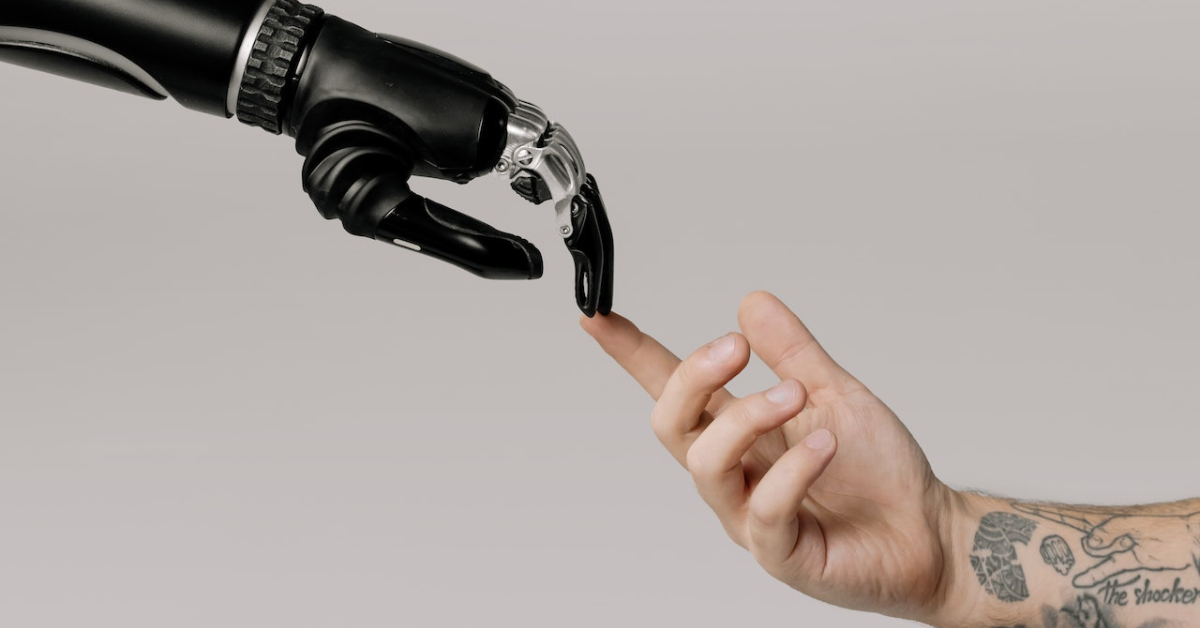
Why do people stand in lines for days to get the newest iPhone? How has Wikipedia recruited a global army of volunteers to maintain the site for free?
These examples represent the power of Community and Crowd.
In the last blog in this ExO series, we looked at Staff on Demand: non-employee, on-demand, contract staffers who help you operate and innovate.
But there’s another ExO attribute that involves an even larger supply of surplus cognitive talent: Community and Crowd.
In today’s blog, we’ll discuss the difference between Community and Crowd, some case studies of each, and I’ll share a few tips on how you can build your own Community.
We’ll start by looking at one of the most successful examples of successfully using this ExO attribute: Ethereum.
Let’s dive in…
NOTE: Understanding how to turn your business into an ExO and increase your growth and impact is a key component of my year-round Abundance360 leadership program.
Ethereum: Harnessing the Power of the Crowd
Ethereum is one of the most established and largest open source blockchain cryptocurrencies, second only to Bitcoin in market cap.
Officially named Ether (“Ethereum” describes the universe of millions of users it has created), it is one of the defining examples of the power of Crowd in modern business history.
Founded in 2013 and launched in July 2015, Ether itself was crowdfunded. It was designed from the start to be radically decentralized and open, allowing any user to place their own applications on its site. As a result, it has accumulated a vast library of decentralized finance (DeFi) applications that, because they obviate the need for intermediaries like banks and brokerages, have proved wildly popular among both businesses and individual users. Remarkably, other cryptocurrencies have used Ethereum blockchain for their own offerings.
Ethereum also enables users to create and exchange non-fungible tokens (NFTs).
The intelligent use of Crowds has been a constant feature of Ethereum’s operations. In 2014, the non-profit Ethereum Foundation was founded and developed by way of an online public Crowd sale. This funding itself was unusual in that investors bought Ethereum value tokens with, of all things, Bitcoin. Two years later, the DAO (decentralized autonomous organization)—essentially, a library of smart contracts developed on the Ethereum platform—raised $150 million in funding via a Crowd sale: a record at the time.
Today, all of Ethereum’s fungible and non-fungible tokens are launched via crowdfunding.
Defining and Comparing Community & Crowd
What exactly do we mean by Community and Crowd, and how do they differ?
Here’s a visual representation of the relationship between the ExO, the Community, and the Crowd:
Now, let’s look at each one in more detail:
A Community, in the ExO context, is a large, global group of people who are passionate about your Massive Transformative Purpose (MTP) and are directly involved in some way with one or more functions of your company. Your Community includes everyone from your Core Team, to current users, past users (alumni), customers, business partners, vendors, and even die-hard fans.
In a nutshell, they are people who have some special bond with your company and are willing to give their expertise, money, or time to make the organization successful.
I believe true Community is achieved when an organization has converted a sizable percentage of these interested parties into dedicated volunteers who add value to the organization.
Kevin Kelly, the founding editor of Wired magazine, believes that you need only 1,000 “True Fans” as a threshold for success.
The next “ring” in the graphic between Community & Crowd is Staff on Demand (SoD), which we covered in an earlier blog. SoD involves using a pool of prequalified people who are hired on an as-needed basis to help perform specific operations.
The Crowd is the remainder of the 8 billion people on Earth who do not have a relationship with you or your organization, but who can be potentially incentivized by rewards to engage with your company and its MTP.
The Crowd is harder to reach, but its numbers are much more significant, making it worth pursuing. One of the best ways to convert Crowd into Community is through Engagement (which we’ll explore later in this ExO series). Engagement includes such things as competitions and incentive prizes.
Let’s look at some successful examples…
Compelling Case Studies of Communities & Crowds
We saw above how Ethereum harnesses the power of the Crowd for its growth and success, and here are several other examples of organizations leveraging this attribute.
Communities
- Roblox. The Roblox platform enables creators in its Community to launch and co-develop new video games and deploy them to Roblox’s marketplace. The platform thus democratizes not only distribution, but also the tools to create video games.
- Peloton. As a result of the boom in home exercise equipment ignited by COVID lockdowns, Peloton became the largest fitness platform in the world, with a loyal community of more than 1.4 million members.
- XPRIZE is a worldwide community of innovators who self-organize into teams to attack and solve very clear, specific incentive-prize challenges. In 2021, the XPRIZE launched a $100 million competition, funded by Elon Musk, to remove gigatons of carbon from the atmosphere and oceans. More than 1,200 teams registered to compete. In April of this year, the foundation launched an $11 million "Wildfire" XPRIZE, asking teams to build and demonstrate the technology to identify a fire at ignition, and then autonomously put it out within 10 minutes. Within a month of launching this XPRIZE, over 100 teams registered to compete.
Crowds
XPRIZE epitomizes the power of engaging and leveraging the Crowd, but here are some other examples:
- GoFundMe. This Silicon Valley–based, for-profit crowdfunding platform helps people raise money to cover the costs of life events that can range from injuries and accidents (often subjects of major media attention) to weddings and personal debt. Between 2010 and 2020, GoFundMe raised nearly $10 billion from more than 120 million donors. Strictly speaking, GoFundMe is a Crowd play, with only a minority of regular donors and just 500 employees.
- TikTok. Founded in 2018 in China (where it is known as Douyin), TikTok allows users to create and post short videos. By 2020, the company had achieved 2 billion downloads and was rated the world’s third-fastest-growing brand. By 2021, it was rated the most popular website in the world. Given the autonomous nature of its postings, TikTok is essentially a giant, Crowd-based company with almost no organized Community. It’s been so successful that lawmakers are alarmed at the addiction it creates in users and are considering banning the application altogether.
- Wikipedia. The Crowd populates, but the Community validates. The world’s encyclopedia, Wikipedia, averages more than 18 billion page views per month, making it one of the most visited websites in the world. The site adds more than 20,000 new articles each month and has 27 million registered users. It contains many times the content of the traditional encyclopedia, can be accessed at light speed, links from one topic to another, and it is updated every second of every day. Best of all, it is free.
How to Build a Community Around Your ExO
So, how can you create an engaged and effective Community for your company?
The reality is that you may not have to.
As Salim Ismail, my co-author of Exponential Organizations 2.0 co-author, says:
“If you build Communities and you do good things in public, you don’t have to find the right people–they find you."
You just need to give them an easy onramp to follow.
And once you begin to build a Community, here are 5 tips you can use to aid its growth and strengthen the membership:
- Use a powerful MTP (that you publicly and internally promote) to attract and engage early members/early adopters.
- Nurture your Community. Elements of this nurturing include listening, inquiring, and giving back. Creating a community that feels heard and feels like “they make a difference” is critical.
- Create a platform to automate peer-to-peer engagement, and to allow community members to create value for themselves in terms of reputation (e.g., GitHub), followers (e.g., Twitter), or revenue (e.g., YouTube).
- Use “Social Tools” to communicate and engage with the Crowd, tools like: websites, blogs, bulletin boards, and a wide range of social media (Facebook, Twitter, Reddit) can draw together the faithful and reinforce their faith.
- Become a platform! Turn yourself into a platform that allows Community members to earn revenue and to support each other (more on this in a future blog).
Vibrant and healthy Communities come together when peer-to-peer engagement occurs.
That means your company, as an ExO, must show trust, conferring with your Community on a regular basis, soliciting its advice, and recognizing its contributions.
In our next blog in this ExO series, we’ll continue to explore the outward-facing SCALE attributes and look more closely at AI and Algorithms.
Want to learn about how to increase your healthspan? And the top longevity-related investment opportunities available?
If yes, then consider joining me on my 2023 Abundance Platinum Longevity Trip.
I'm running two VIP trips I call my “Abundance Platinum Longevity Trip” covering top scientists, startups, labs, and CEOs in Cambridge, Boston, New Hampshire, and New York. I do the same trip twice for up to 40 participants: Aug. 16 - 20, 2023 or Sept. 27 - Oct. 1, 2023.
Each trip is a 5-Star/5-Day deep dive into the cutting-edge world of biotech/longevity and age-reversal.
You’ll meet with the top 50 scientists, CEOs, and labs working on adding decades to your life. You will also learn about breakthroughs against a wide range of chronic diseases.
This year, some of the world-changing labs and faculty we’ll visit include: David Sinclair, PhD, Harvard Center for Biology of Aging Research; George Church, PhD, Harvard Wyss Institute; Dean Kamen, PhD, Advanced Regenerative Manufacturing Institute (ARMI); and Fountain Life, New York—just to name a few.
Both trips are identical (capped at 40 participants per trip), during which I spend all 5 days with you as your private guide and provocateur. Through this personalized, action-packed program, my mission is to give you exclusive, first-hand exposure to the major players, scientists, companies, and treatments in the longevity and vitality arena.
Here's what you get: All your questions answered. First-hand insights and early access to diagnostics, therapeutics, and investment opportunities.
If you want to learn more about the Abundance Platinum Longevity Trip, go here, indicate your interest and we'll set up an interview!
I discuss topics just like this on my podcast. Here’s a conversation I recently enjoyed:
A Statement From Peter:
My goal with this newsletter is to inspire leaders to play BIG. If that’s you, thank you for being here. If you know someone who can use this, please share it. Together, we can uplift humanity.



-1.png?width=1250&height=197&name=Untitled%20design%20(25)-1.png)
-1.png?width=318&height=50&name=Untitled%20design%20(25)-1.png)




